75 reasons you may be a Gen Joneser
1. You know what happened on “a three hour tour” (and can finish the theme song!).
2. You got annoyed when corn kernels spilled into the dessert compartment of your TV dinner.
3. You first knew of John Glenn as an astronaut.
4. You know that Laura Petrie came before Mary Richards.
5. You were ecstatic to have access to an electric typewriter to do your term papers.
6. You looked at beaches differently after seeing “Jaws.”
7. You were a member of the Columbia House Record and Tape Club.
8. You’ve flown on a four-engine propeller passenger plane.
9. You remember baseball before the designated hitter.
10. You know Fred and Wilma, Barney and Betty.
11. You remember, as a kid, simply “going out to play.”
12. You once got all excited about the new frontiers of FM radio.
13. You held back tears during the premiere of “Brian’s Song.”
14. You know the difference between a flash cube and a flash bulb.
15. You know that “Have it your way” is not to be confused with As You Like It.
16. You huddled under your covers while reading “‘Salem’s Lot.”
17. You can finish from memory the song that starts with “Doe, a deer, a female deer…”
18. You know that Felix and Oscar were just apartment mates, though Felix might’ve given you pause.
19. You recall how “You’ve come a long way baby” was used to sell cigarettes to women, and you remember the tune!
20. You owned Silly Putty.
21. You understand the brilliance of “Tapestry” by Carole King.
22. You lobbied your mom to buy a new product called “Buitoni’s Instant Pizza.”
23. You’ve literally dialed a phone number.
24. You debated the merits of Billie Jo, Bobbie Jo, and Betty Jo (“Lots of curves, you bet…”).
25. You know why CNN, MSNBC, and Fox News together don’t add up to one Walter Cronkite.
26. You know that Dr. J came before Air Jordan.
27. You associate “There’s got to be a morning after” with a sinking ship (not the Titanic).
28. You know which President was a peanut farmer.
29. You remember the battle over the Equal Rights Amendment.
30. You remember how the arrival of a Baskin Robbins ice cream store in your neighborhood was an event.
31. You first laughed at Flip Wilson’s jokes listening to an LP album.
32. You now get hives at the thought of “Seventies music.”
33. You now start twitching when you think about “Seventies television.”
34. You woke up early on Saturday mornings, in breathless anticipation of your favorite cartoon shows.
35. You recognize the names Hoss, Little Joe, and (wincing…) Hop Sing.
36. You had an ant farm or Sea Monkeys.
37. You know who used the Cone of Silence.
38. You got all excited about the Bicentennial.
39. You had a Bobby Sherman poster in your room.
40. You had that Farrah Fawcett poster in your room.
41. You remember when yogurt was considered kind of exotic.
42. You remember when acupuncture was considered extremely weird.
43. You watched the grainy live video of the first moon landing.
44. You once filled your car with leaded gasoline.
45. You know that “Fischer v. Spassky” was not a lawsuit.
46. You were just a tad too young to fully grasp all those protests during the 60s.
47. You debated the merits of Davy Jones vs. David Cassidy.
48. You’ve ingested Jiffy Pop, Space Food Sticks, and Tab.
49. You used mimeographed and ditto master handouts in grade school.
50. You watched an American President resign on national TV.
51. You’ll take Olivia Newton-John over any of today’s pop tarts.
52. You get all of the jokes in the movie “Airplane!”
53. You read Tiger Beat magazine.
54. You read Mad Magazine.
55. You made Creepy Crawlers and ate ’em.
56. Your first understanding of death came out of JFK’s funeral.
57. You remember Howard, Frank, and Dandy Don.
58. You know why Leno, Letterman, and Conan together don’t add up to one Johnny Carson.
59. You know that “Got to Be There” came before “Thriller.”
60. You read My Weekly Reader and Ranger Rick magazines in grade school.
61. You debated amnesty for draft resisters.
62. You know that Shirley Chisholm came before Hillary Clinton.
63. Your head automatically starts playing the music from “Charlie Brown Christmas” every holiday season.
64. You daydreamed of owning all the toys in the Sears Wish Book catalog.
65. You regard the theme song from “Hawaii Five-0” as one of the best of all time.
66. You sent away for stuff advertised in comic books.
67. You rank Ball Four as one of the greatest and funniest sports books ever.
68. You played lots of board games with friends and family.
69. You have (possibly vague) memories of cities rioting.
70. You rooted for Billie Jean King or Bobby Riggs (but not both!).
71. You thought that quotes from the TV show “Kung Fu” were so profound.
72. You wrote and received real handwritten letters from friends and family.
73. You skipped watching “That 70’s Show” because it was too been there, done that.
74. You can explain, even today, the sibling rivalry between Marcia and Jan.
75. You easily can add a half dozen of your own items to this list!
******
If you can say YES to more than half of the items on this list without using Google or Wikipedia, there’s a darn good chance that you’re a card-carrying American member of Generation Jones!
Please feel free to add your own in the comments!
(And for those wondering about any of these pop culture references, searches on either of those two online sources will fill in the details. I fully concede that this list favors those who watched too much television as kids!)
Gilligan’s Island image: Wikipedia
The stories of our lives
For me, the best part of embracing (or at least not resisting!) middle age is the feeling that I’ve finally sorted out my core priorities and values. I’m not suggesting that change is undesirable or impossible at this stage. Rather, I believe that real, positive change is best built on a grounded base of earlier experiences and lessons we’ve learned from them.
On that note, a short passage from Pathways to Bliss: Mythology and Personal Transformation (2004), a collection of writings by the late Joseph Campbell, is instructive. Campbell wrote:
In a wonderful essay called “On an Apparent Intention in the Fate of the Individual,” [philosopher Arthur] Schopenhauer points out that, once you have reached an advanced age, as I have, as you look back over your life, it can seem to have had a plot, as though composed by a novelist. Events that seemed entirely accidental or incidental turn out to have been central in the composition.
I don’t know if I’m fully at that point yet, but I do understand the passage in ways I would not have a decade ago.
Story plots
In this context, it’s helpful to think about the stories of our lives. In The Seven Basic Plots: Why we tell stories (2004), Christopher Booker posits that seven basic plot lines continually recur in literature and drama:
- “Overcoming the Monster”
- “Rags to Riches”
- “The Quest”
- “Voyage and Return”
- “Comedy”
- “Tragedy”
- “Rebirth”
Let’s apply these seven types to our own story arcs, and attempt to change the narratives if they aren’t going our way. Only one of the seven — tragedy — is negative on its face. And with the exception of comedy, the rest encompass seizing opportunities, meeting challenges, overcoming obstacles, and recovering from setbacks.
Beyond ourselves
Our stories also may include reaching out beyond our own lives and striving to better the world around us.
My friend Kayhan Irani, an award winning cultural activist based in New York (she’s way too young to be a Gen Joneser, but who’s counting!?), co-edited with Rickie Sollinger and Madeline Fox a volume of essays, Telling Stories to Change the World (2008). The book gathers narratives and reflections on social justice from around the world.
Whether it’s the immigrant experience in New York’s Hudson Valley, teaching about genocide in Darfur, women living in Muslim cultures, or a host of other settings, Telling Stories to Change the World draws us out of ourselves and, in the process, invites us to think about how we can make a difference in our own lives. Especially for those of us whose life experiences have been more conventional (in the American middle class sense of the term), this is a book of differences and possibilities.
When I started this blog a few weeks ago, I asked How will Generation Jones make its mark? During the years to come, I believe that part of that answer will include contributing toward positive change in our communities. We have a lot of good chapters left to write, I’d say.
The Wizard of Oz and Generation Jones
No single generation can lay claim to “The Wizard of Oz” (1939), but I certainly can attest that it holds iconic status in the eyes of many Gen Jonesers.
It’s a movie that we associate with our childhoods, replete with the annual anticipation of its fall screening on TV. It was an event in our lives, right there on the small screen. The songs became etched in our minds, especially “Over the Rainbow,” “Ding, Dong, the Witch is Dead,” and “If I Only Had a Brain.” The scary parts, most notably the tornado scene, anything to do with the Wicked Witch, and the flying monkeys, had us huddled together on our couches.
And how many times have variations of memorable lines from the movie entered into our everyday sayings and quips? Such as:
- “Lions, and tigers, and bears! Oh, my!”
- “Pay no attention to that man behind the curtain.”
- “I’m melting! melting!”
- “…we’re not in Kansas anymore”
- “Shucks, folks, I’m speechless.”
- “There’s no place like home!”
(See the imdb.com entry for more!)
“It’s a twister! It’s a twister!”
Over the past five years, I’ve gone on a number of storm chase tours in an effort to learn more about severe weather in America’s heartland. The tours are led by expert storm chasers, and these experiences have put me in touch with dozens of other chasers, severe weather enthusiasts, and storm geeks.
Whenever we talk about the roots of our passionate interest in tornadoes, the twister scene in “The Wizard of Oz” inevitably comes up, early and often.
Spanning our emotions
Very few movies of our childhood so envelop a range of emotional qualities: Joy, longing, belonging, friendship, caring, love, fear, courage, shame, kindness, evil. We care about and identify with the core characters. Each has a quest, a challenge, and we root for them.
Yup, I could wile away the hours (sorry!) thinking about the lasting imprint of this movie on my generation.
***
Movie poster: Wikipedia
Time travel: Some favorite destinations
Remember “The Time Tunnel,” the short-lived but fascinating television time travel drama from the mid-60s? Every new episode would find scientists Tony Newman and Doug Phillips landing in a different historical setting, usually on the eve of some major event, such as the sinking of the Titanic, the Battle of Little Big Horn (General Custer and Crazy Horse), or the bombing of Pearl Harbor. (Unfortunately, they never could persuade folks that disaster loomed.) To this day, I credit that show for helping to stoke a lifelong interest in history and to fuel my imagination with thoughts of going back in time.
What if time travel was possible? What places and times would I want to visit? Here’s an off-the-top-of-my-head list, not exactly an exotic one, but it sure would be a fascinating set of journeys. Feel free to add yours in the comments!
***
New York City, 1880s — My favorite time travel novel, Jack Finney’s captivating Time and Again (1970), is set in early 1880s Manhattan. There’s a scene in the book when his protagonist, Si Morley, realizes that he made a successful journey back. It remains one of my most favorite reading moments, ever.
New York City, 1920s — I’d be at everything and anything by George Gershwin, Rodgers & Hart, and Cole Porter. I’d be at the jazz clubs of Harlem. I’d be at Yankee Stadium watching Ruth & Gehrig. I’d be hanging out in Greenwich Village. I’d also want to check out student life at New York University, my law school alma mater. The 1920s is one of my favorite decades, and NYC of that time would make for a grand visit.
New York City, post-war 1940s and early 1950s — I can’t imagine a better place to drink in the spirit of America’s post-war optimism. I’d also venture out of Manhattan to Ebbets Field in Brooklyn, where I’d watch Jackie Robinson break baseball’s modern color barrier. I’m sure I’d spend plenty of time and money at the dozens of used bookstores in the city. And yes, I’d hang out in the Village during this period, too.
Chicago, 1893 — Chicago hosted the Columbian Exposition World’s Fair. The photographs of it look stunning, a city bathed in light. It also marked Chicago’s arrival as a major city.
Chicago, 1920s — When I was a kid, one of my favorite books was Albert Harper’s Chicago Crime Book (1969), which told tales of Al Capone and other famous gangsters. Thus was born a fascination with Chicago’s Roaring Twenties.
San Francisco and Berkeley, California, mid-to-late 1960s — I’d like to experience the whole California Dreamin’ thing. I’d be the squarest person in Berkeley’s People’s Park, but at least I’d be able to take good pictures.
London, late 1880s — Yeah, I’d sleuth around the East End to discover the identity of Jack the Ripper. I’d be drawn to the sinister side of Victorian London. I’ve also read about the food carts of the era and would like to give them a try.
London, 1940 — London during the Battle of Britain and the Blitz. It’s such an iconic, defining, dramatic moment in British history. Just thinking about it has me imagining Edward R. Murrow’s radio broadcasts from London as the German bombs were falling around them.
Paris, 1920s — I probably wouldn’t stay long, but I’d want to check out that whole Left Bank scene and the Lost Generation. I’d hang out in Paris cafes and do a bit of writing. (Challenge: No outlets for my laptop.)
Washington D.C., 1861-65 — Washington during the American Civil War. Hot, miserable, and menacing. But fascinating nonetheless. And somehow I’d finagle a way to have a short chat with Abraham Lincoln.
Boston, Revolutionary Era — I live in a city where evidence of the early years of the American Revolution is all around us. How cool it would be to see Boston of that era, perhaps bumping into the likes of John Adams, Samuel Adams, and other remarkable figures of the day.
Salem, Massachusetts, 1600s — Will we ever know the full truth about the events surrounding the Salem Witch Trials? It would be fascinating to find out.
Ancient Athens — I’d follow Socrates as he traipses around the Athenian marketplace. I’d want to get some first hand lessons in how the ancient Greeks lived, and trace some of the origins of Greek mythology and philosophy.
Hawaii, 1920s — Among my treasured Hawaiian collectibles is a February, 1924 National Geographic magazine with 16 pages of incredible color illustrations of the Islands. I can only imagine seeing those sights in person! If I was on Maui during October 1926, I’d go to the hospital in the small town of Paia to say hi to the newborn baby who someday would be my mom. While on Maui, I’d take a train ride on the narrow-gauge Kahului Railroad.
Hawaii, 1950s — After WWII, Hawaii was making its way toward eventual statehood. Large passenger airplanes — still propeller-driven, as the jets wouldn’t arrive in the early 60s — now made air travel to the Islands a safe reality. The idea of Hawaii as America’s Pacific paradise was in full bloom.
Valparaiso, Indiana, early 1910s — Valparaiso University, my collegiate alma mater, was rescued by the Lutherans in the 1920s after a period of decline. Before that, however, it was a thriving, no-frills, secular college known as the “Poor Man’s Harvard” that provided collegiate, professional, and trade courses to young people who aspired to join America’s emerging middle class.
Hammond, Indiana, 1950s — Hammond was my hometown from grade school through high school, from the late 60s through late 70s. By then it was a city in decline, its jobs base shrinking due to the decline of steel mills and manufacturing in Northwest Indiana. But during the 50s it was a thriving small city and an emerging outer suburb of Chicago.
Airplanes — I would love to fly in two legendary, early passenger airplanes, the Ford Trimotor (late 1920s) and the DC-3 (mid 1930s).
Trains — How fun it would be to take the Pioneer Zephyr, one of the first modern diesel passenger trains, on its popular Chicago-to-Denver run during the 1930s.
***
I’m struck by the fact that this list doesn’t have much to do with my current work. Hardly anything about law, the labor movement, politics, and the like. Not much about war, either, despite that I read a lot about the Civil War, WWI, and WWII. I’m not sure quite what that says about my choices, but unless science develops affordable time travel during my lifetime, this is not a pressing matter.
Bookmarking middle age
Recently I showed how I’ve accepted the identity of “middle aged” when I bookmarked the Next Avenue website on my computer.
Click & add. Call it a form of Digital Age self-therapy.
Hosted by PBS, Next Avenue is a content-rich source of articles and blog posts containing information and advice especially for folks who have reached the age 50 threshold. Its main menu includes categories such as “Health & Well Being,” “Money & Security,” “Work & Purpose,” “Living & Learning,” and “Caregiving.”
I first clicked to the site with the grudging ‘tude of every 50+ guy who thinks of himself as being 25 at heart. Once I discovered what was there, however, I kept going back.
Finally, after repeated visits, I realized it was time to make the ultimate digital commitment: I bookmarked it, on multiple devices, no less.
Now and tomorrow
Next Avenue maintains a healthy focus on the present and the future. Its contents are immediately relevant to me. I can’t say that I follow all the sage advice provided — witness the cinnamon roll I polished off for breakfast the other day — but it’s there for the taking.
In addition, as someone on the younger end of Next Avenue‘s intended base audience (an increasingly unusual situation), it provides me with a preview of the years to come. We Americans, especially, are socially programmed to resist, even dread, anything to do with aging. But one welcomed aspect of my creeping emotional maturity is the realization that the experiences, insights, and stories of folks a generation ahead of us can yield a lot of helpful lessons.
Generation Jones, 9/11, and a formative decade
Here in the U.S., today is marked by the annual observances of the attacks of September 11, 2001. Several friends and family members who were more directly affected by 9/11 — in New York, Boston, and elsewhere — are readers of this fledgling blog. I know that this is an especially meaningful and hard day for them.
Those who study the beliefs and attitudes of different generations often seek to identify shaping mega-events. For Americans of two generations, it’s pretty easy: The Depression and World War II for the “Greatest Generation,” and numerous points along the whole Sixties arc for classic Baby Boomers.
And what of Generation Jones? For my generation, I believe that the 9/11 attacks were a signature event and the beginning of a defining decade.
I lived in New York City from 1982 to 1994, and for six of those years had practiced law in lower Manhattan, within easy walking distance of the Twin Towers. New York was my first chosen home, a place I have loved from my first forays into Manhattan. The images of the day — via TV screens here in Boston — felt like a hard body blow. And I knew, in ways I couldn’t fully anticipate, that the ground had shifted under us.
For many Gen Jonesers, that day shook us out of the complacency of lives formed largely in the 1970s and 1980s. Most Americans have been fortunate to escape the risks of upheaval and terrorism that continually confront millions of others around the globe. For us, 9/11 launched a new reality and a tumultuous decade, capped by the financial meltdown.
That decade likely will reverberate throughout our years. Regardless of one’s politics, the “war on terror” has changed the way we live and created challenging, unresolved questions for public policy and foreign affairs. During the last years of the 2000s, our focus shifted to economics, and brutally so. Our financial system went into near collapse, and although economists have proclaimed the Great Recession “over,” millions of people are still trying to recover.
The two preceding generations experienced their formative events relatively early in their lives. For Gen Jonesers, I think we’ll look back and see that the last decade created our new worldview, well into our adulthoods. And far from being the stuff of soggy nostalgia, we’ll be living with these realities for the long term.
******
The YouTube link above is the opening montage from Woody Allen’s 1979 film, “Manhattan.” Its beautiful black & white cinematography, accompanied by Gershwin’s luscious “Rhapsody in Blue,” capture the indomitable spirit of this great city.
Can Generation Jones talk to its animals?
Okay folks, this is based purely on anecdotal evidence, but many of my Gen Jones friends are among the most devoted animal lovers I know.
They care deeply for the critters they bring into their homes, they understand their quirky personalities, they play with them and feed them well, and they will dig into their pockets when a trip to the doctor is needed.
These animals become part of the fabric of individual lives and families. They are much more than “substitutes” for kids or spouses/partners or friends; they have a standing (and eating and sleeping) of their own.
It’s mostly a dog or cat thing, though other four-legged beings, plus birds and fish, are a big part of the picture too.
Some may think these devotions are over the top, but I see them as healthy — unless, maybe, you’re living with 40 cats in a studio apartment. Otherwise, animals bring joy and comfort to our lives and allow us to return the favor. Their presence helps us to live in the moment, no easy task given the pace and challenges of modern life.
Fall is my most nostalgic season
I’ve spent my whole life in places where the seasons change: Northwest Indiana, New York City, and now Boston. Of course I complain about the extremes of hot and cold weather, but if I’m being honest with myself, I admit to liking the change of seasons.
Spring is my favorite, but it never lasts long enough anywhere I’ve lived. Fall, however, has staying power, and for some reason it’s the season that most pushes my favorite childhood nostalgia buttons.
I think it has a lot to do with memories of going back to school as a grade schooler. My brother Jeff and I were fortunate to go to a good little neighborhood public grade school in Hammond, Indiana, staffed largely by old-fashioned teachers who really cared about the kids and drilled us on the basics. I don’t have to engage in a lot of revisionist history to say that it created some good memories.
Those memories connect to holidays and historical dates associated with the fall: Columbus Day, Halloween, and finally Thanksgiving, the bridge to winter. Of course, Columbus Day and Thanksgiving were drenched in the feel-good historical fictions contained in our easy reading history books. Halloween was a calorically magical and innocent observance, replete with neighborhood trick-or-treating where the only fears about knocking on strangers’ doors were over ghosts and goblins. And some of us imagined ourselves waiting with Linus for the Great Pumpkin to appear:
Fall is a wonderful time of year in Boston. The weather is cool and comfortable, and the leaves turn colors in spectacular ways. The many historical sites from the American Revolution remind me of my childhood introduction to history, which quickly became one of my favorite subjects and remains so to this day. And not too far away is Salem, home to the real-life witch trials and some modern day tourist traps!
Today, of course, the seasons also correlate with what I do for a living. We have a fall semester and a spring semester, and I still use a personal, academic year calendar book where I write in my class schedule and various meetings by hand. Classes started this past week, and the weather has hit a classic fall-type cool patch. It’s a comforting combination for me.
How will Generation Jones make its mark?
If you’re a card-carrying U.S. member of Generation Jones, you no doubt recognize this screen shot from “Rudolph the Red-Nosed Reindeer,” depicting some of the inhabitants of the Island of Misfit Toys, hoping that Santa Claus will pick them up some Christmas Eve and deliver them to loving homes.
And that, for me, captures how I feel about our chronological place in time. I think of Gen Jones as a group whose formative period missed out on the heart of the Sixties and preceded much of the gee-whiz launch of the Digital Age.
Instead, the Seventies come to mind, and I don’t necessarily consider that a good thing: Big, gas guzzling cars; a struggling economy; lots of cheesy pop music, TV, and movies; some pretty scary fashions; high crime rates and crumbling cities; and the outing of political corruption at a national level. Despite my Cancerian devotion to nostalgia, that’s one decade I don’t get all warm and fuzzy about.
Finding our place now
But I’m over that — er, sort of.
More importantly, there’s a bigger question presenting itself, and that’s how we make our mark as a generation. I know I’m not alone in wrestling with these thoughts. The quest to find that narrative and purpose is said to be one of the defining characteristics of Gen Jones, as its Wikipedia entry suggests:
The name “Generation Jones” has several connotations, including a large anonymous generation, a “keeping up with the Joneses” competitiveness and the slang word “jones” or “jonesing”, meaning a yearning or craving. . . . It is said that Jonesers were given huge expectations as children in the 1960s, and then confronted with a different reality as they came of age in the 1970s and 1980s, leaving them with a certain unrequited, “jonesing” quality.
For now, it’s fair to say that the process of generational self-definition is a work-in-progress for Gen Jones.
Here’s one take on it…
Beth Wiggins, whose work brings together aging issues and community services, suggests that Gen Jones can make its unique contribution by how we handle our aging population. Here’s a piece of her article for MinnPost.com, “Time for the Jones Generation to Make Its Mark”:
We . . . have been given a name: Generation Jones. Born between the mid-1950s and the mid-1960s, you don’t hear much about the Jones cohort. Yet, we outnumber all other Boomers and Generation X. Jonathan Pontell, who coined “Generation Jones,” describes it as a large, anonymous generation with unfulfilled expectations. . . . But here we are at our midcentury mark, and we have an opportunity to step out and make a difference.
. . . And we must, whether motivated by pursuit of the greater good or pure self-interest. Generation Jones is the crest of the population age wave. We personify its biggest challenges and are especially vulnerable to the potential insecurities when the wave hits the shore. Health-care costs continue to escalate, and Medicare is in a precarious position. Professional care-giving work force shortages loom ahead. Dispersed families and the increasing prevalence of single-person households have implications for how informal care is provided in the future. How we approach aging matters.
A good conversation over a bite to eat
Just yesterday I enjoyed a quick meal with an old friend from high school who was in town on business. We hadn’t seen each other in decades, but Facebook put us back in touch. He’s got a ton of important work experience in both the private and public sectors, and he’s at a point in his life where he’s considering how to bring this accumulated wisdom to bear upon some of our larger challenges in creating a vibrant, socially responsible economy.
Our conversation covered a wide swath of what our generation has experienced over the past 30 years. For both of us, this includes witnessing the sharp decline of our hometown of Hammond, Indiana, once a thriving small industrial city in Northwest Indiana’s steel belt, now yet another Midwestern locale trying to hang on. We’ve seen good jobs at decent wages disappear, with massive shifts in wealth distribution to go along with it.
Will my friend be part of a creative solution? I’m betting that his myriad experiences, and what he’s learned from them, have led him to this point.
Legacies
There’s no shortage of good works and noble deeds that need doing. That said, we’re in our 50s and late 40s. Realistically speaking, we have about a 20 year window to continue or begin creating the heart of our personal and collective legacies.
In other words, we can’t afford to feed a lot of angst about the world and our places in it. It’s game time, and we need to realize that.
Welcome, dear readers!
Welcome to Musings of a Gen Joneser, my personal blog especially for late Baby Boomers and early Generation Xers.
“Generation Jones” is the term coined by television producer, director, and writer Jonathan Pontell to capture that group of people born between 1954 and 1965. We’re between two well-defined generations, and our life experiences — on the whole, at least — are different than those of classic Baby Boomers and Generation Xers.
Years before I had heard the term Generation Jones, I referred to my age cohort as the ‘tweener generation. I felt that we didn’t quite fit in with the prevailing characterizations and timelines of the Boomers and Gen Xers. And now that we’re decisively into our middle years, I think we have some unique perspectives, insights, and observations worth sharing.
I don’t mean to sound all that earnest. This blog will serve up plenty of trivia and pop culture, in addition to the serious stuff. And I’ll use this as an excuse to share personal stories as well. I plan to be writing from here at least once a week, and I hope you’ll enjoy what I have to offer.
***
A few words of introduction: I’m a law professor, active blogger, and activist, and I live in the Boston neighborhood of Jamaica Plain. I was born in 1959, which puts me right in the heart of Generation Jones! If you’d like to learn a bit more, I’ve included some brief biographical information on my About page.
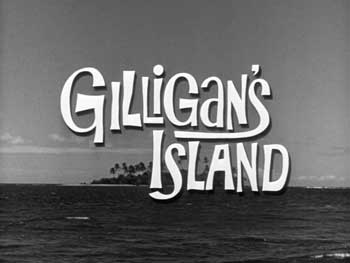
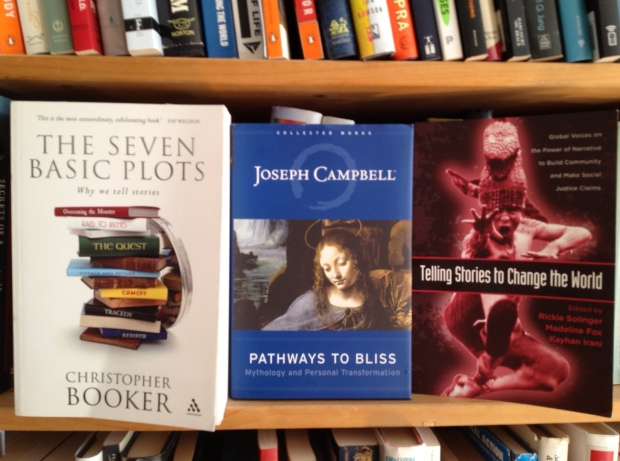
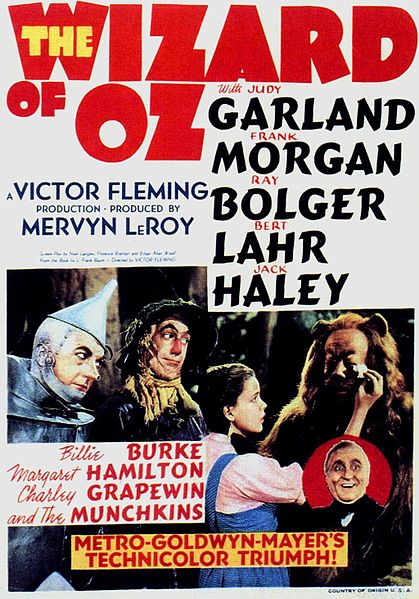
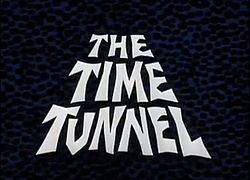

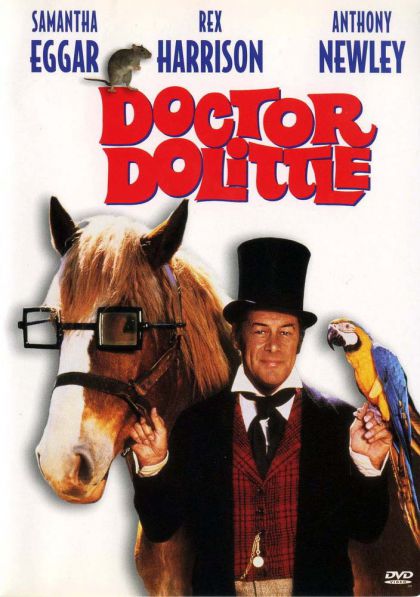
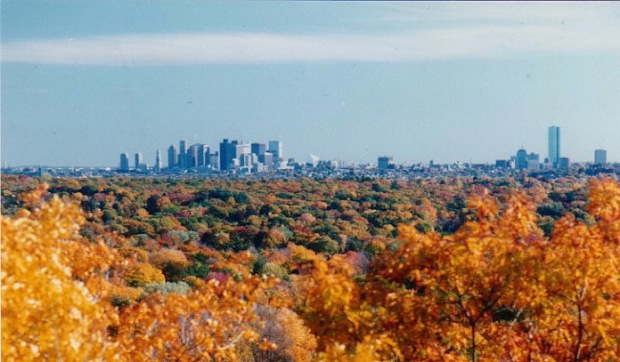

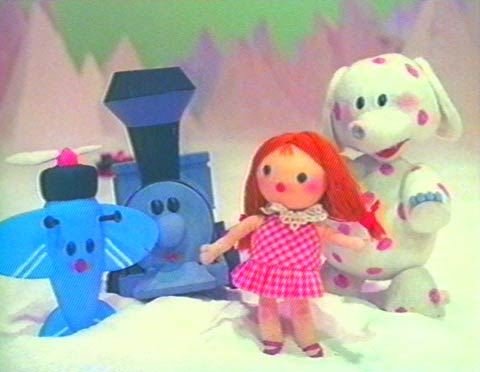
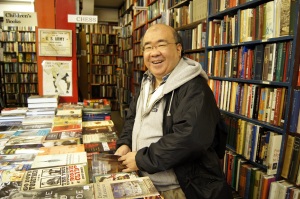
Recent Comments